
Pots, bathtubs, and half barrels overflowing with blossoms add allure to any backyard, but container gardening can serve a practical purpose also. Container gardening is ideal for those who have little if any garden area. Besides growing flowers, anglers restricted to a balcony, small yard, or only a patch of sunlight on their driveway can make a huge variety of vegetable crops in containers. Basil, chives, thyme, along with other herbs also are quite happy growing in baskets, which is set in a handy place right outside the kitchen door.
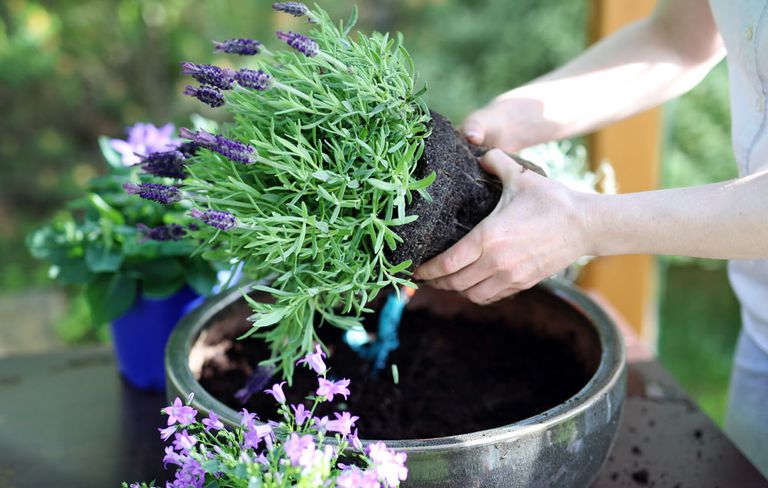
Container gardening adds flexibility to gardens large and small. Plants lend instant shade, provide a focal point in the backyard, or tie at the architecture of the home to the backyard. Place them on the floor or on a pedestal, mount them on a windowsill, or hang them in your porch. A pair of matching containers on both sides of the front walk serves as a welcoming decoration, whilst container gardening on a patio or deck can add colour and ambiance to such outdoor sitting areas.
You can use single, big containers for outdoor decoration, but also look at arranging groups of baskets, both small and large, on stairways, terraces, or anywhere in the garden. Clusters of pots can contain a collection of favorite plants — hen-and-chicks or blossoms used both for decoration and for cooking, such as — or they might feature annuals, dwarf evergreens, perennials, or any other plants you’d love to try. Houseplants summering outside in the shade also make a handsome addition to container gardening. Window boxes and hanging baskets provide even more ways to add instant color and allure.
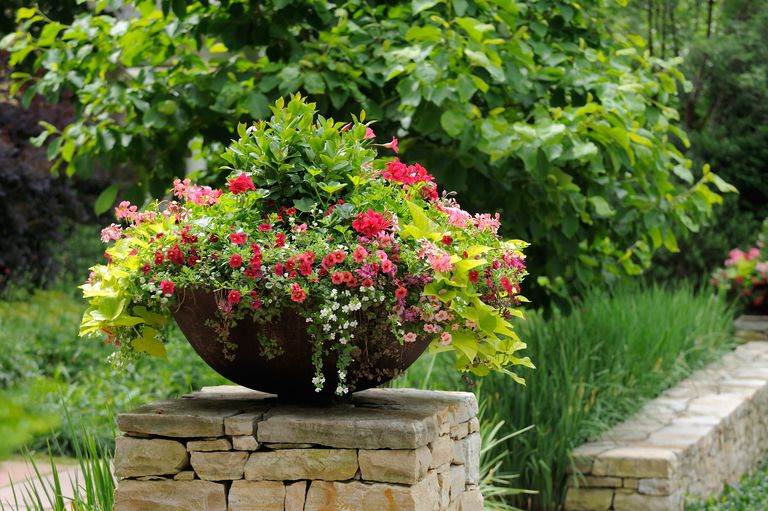
Containers planted with one species — rosemary or a daring variegated ornamental grass, for example — can be stunning garden accents. Containers planted with a mix of plants are fun to produce and offer almost unlimited possibilities of combinations. The best combinations depend on plants which feature fine foliage and flowers produced over a long bloom season.
One easy guideline for choosing the plants to unite in a container is to include”a thriller, a spiller, and a filler.” That translates to at least one focal-point plant (the thriller), like coleus or even a geranium with multicolored leaves, by way of instance, combined with different plants that spill over the edge of the pots — such as petunias, bacopa, creeping zinnias, or ornamental sweet potatoes. In the end, add the fillers, which are plants with smaller leaves and flowers that include color and fill in the arrangement all year. Superior fillers include salvias, verbenas, ornamental peppers, and wax begonias, as well as foliage plants such as parsley or licorice plants. You may also want to include a plant for height, such as purple fountain grass. Add a trellis or column into some container and you can use a vine to add height to the composition. You are going to need a total of six or five crops for an 18- or 24-inch container, for example.
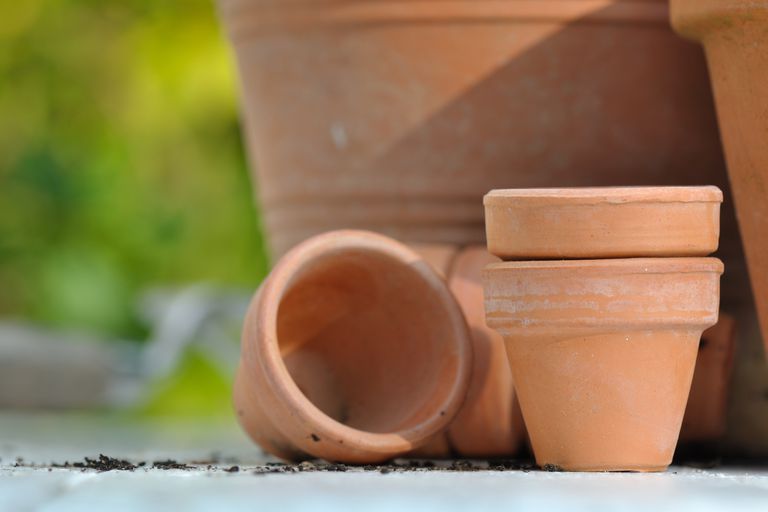
Keep in mind that it’s a lot easier to develop plants in massive containers than small ones. That is because large containers hold more dirt, which stays moist longer and resists rapid temperature changes. Little hanging baskets are particularly prone to drying out, and during warm summer season, you may have to water them twice per day to keep plants alive.
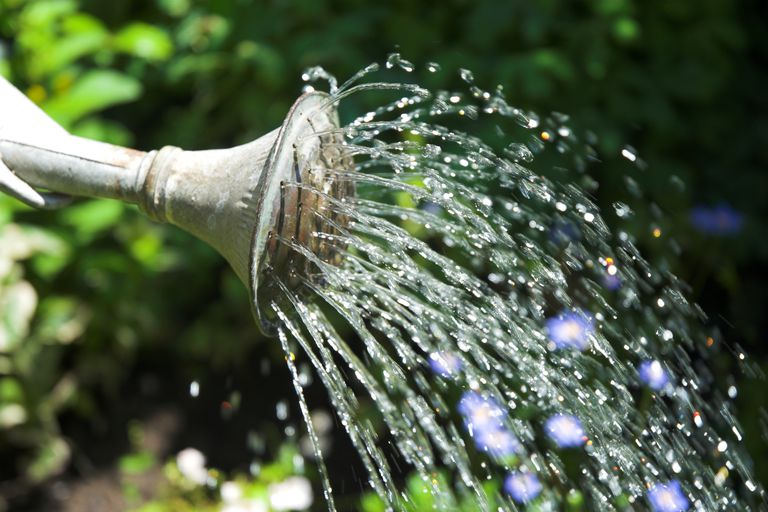
Additionally, it is important to choose what plant you would like to grow in each container. Many things help determine how large and deep the container has to be. Think about the size and shape of a plant’s root system; whether it’s a perennial, annual, or shrub; and how quickly it develops. Rootbound plants, which have filled up every square inch of the ground accessible, dry out rapidly and will not rise well. Pick a large pot or tub for a combined planting, one that will offer sufficient root space for all the crops that you would like to grow. Light-colored containers maintain the soil cooler than dark containers.
The maximum size (and weight) of a container is restricted by how much space you have, what’s going to support it, and whether you plan to transfer it. If your container garden is located on a balcony or deck, be sure to check how much weight the structure will safely hold.

Whatever container you choose, drainage holes are crucial. Without drainage, dirt will become waterlogged and plants can die. The holes do not need to be big, but there should be sufficient that excess water can drain out. If a container has no holes, try ringing some yourself. A container without holes is best employed as a cachepot, or pay, to conceal a plain pot. Cachepots (with pockets and with them) are helpful for managing large plants and heavy baskets: Boost your plant in an ordinary nursery pot that fits inside a decorative cachepot so it is possible to transfer them individually.
Self-watering, double-walled containers, hanging baskets window and window boxes are available. These are a useful option for coping with smaller plants that require frequent watering.
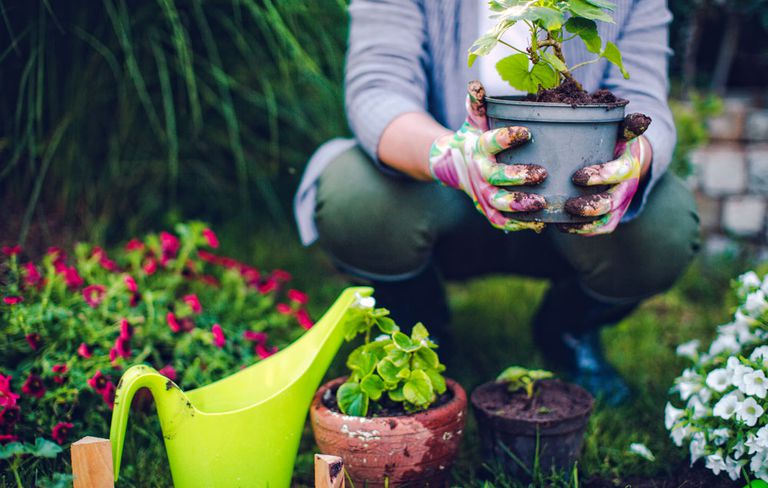
Clay or terracotta containers are appealing but breakable and easily damaged by freezing and thawing. In Northern areas, most have to be stored in a frost-free location to protect against cracking and aren’t acceptable for hardy perennials or shrubs which are going to be kept outdoors year-round.
Cast concrete is durable and comes in a range of sizes and styles. These could be left outside in all weather. You can even make appealing ones yourself. Plain concrete containers are very heavy, so that they are tough to maneuver and not suitable for using on decks or balconies. Concrete mixed with vermiculite or perlite, or concrete and fiberglass combinations, are much lighter. To get a milder pot with a concrete look, proceed with planters are lightweight, relatively inexpensive, and available in many shapes and sizes. Choose sturdy and somewhat flexible containers and prevent thin, rigid ones — they eventually become brittle with cold or era.
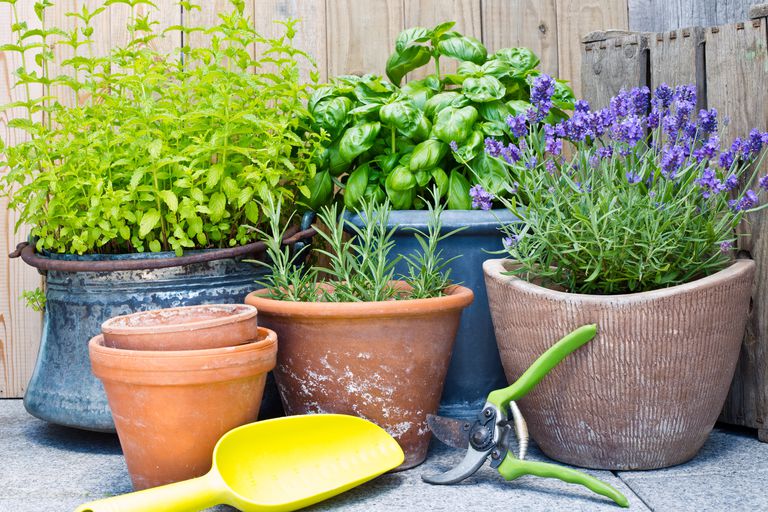
Containers manufactured from polyurethane foam weigh up to 90 percent less than terracotta or concrete containers, yet they look remarkably like their much-heavier cousins. Polyurethane foam containers withstand chipping and cracking and also insulate roots from both hot and cold temperatures, which makes them a good selection for potting up plants which will stay outside year-round.
Wood is protects and moisturizes roots from rapid temperature swings. You can build wooden planters yourself. Pick a naturally rot-resistant wood such as cedar or locust, or use pine treated with a preservative. (Do not use creosote, which is poisonous to plants) Molded wood-fiber containers are hardy and inexpensive.
Because containers are heavy once they are full of dirt, pick where they’ll be found and transfer them into place before filling and planting. If keeping them watered during the day is a problem, look for sites that receive morning sun but get shaded during the hottest aspect of the day, even when you’re growing plants for full sun. Afternoon shade will decrease the amount of moisture plants desire.
Though your containers should have drainage holes, then it’s not essential to cover the holes pot shards or dirt until you add potting mix. The covering won’t improve drainage, and pot shards might actually obstruct the holes. Instead, prevent soil from washing out by placing a layer of paper towel or paper over the holes prior to adding mix. If your container is too heavy, you can set a layer of gravel or Styrofoam at the bottom to reduce the total amount of potting soil required.
Plain garden soil is too dense for container gardening. For containers around 1 gallon in size, utilize a houseplant soil mix. For larger containers, then use a relatively coarse soilless planting mix to keep the needed water and air balance.
Pre-moisten soil either by watering it until you fill containers or by flood the containers with water a few times and stirring. Be sure the soil is uniformly moist before planting.

If you’re planting a mixed container, then ignore spacing requirements and plant densely; you need to prune plants once they fill . For trees and shrubs, cut off any circling roots and then cover the root ball to the same level as it was put in the nursery. Business the planter mixture lightly and settle by watering thoroughly. Don’t fill baskets level towards the top with soil mix — leave space for watering.
Almost any vegetable, flower, herb, shrub, or small tree can grow successfully in a container. Select plants to suit the climate and the amount of sunlight or shade the container will get. If you are growing blossom plants, for example heliotrope (Heliotropium arborescens), put containers in a site protected from breezes, which will disperse the cologne.
Use your imagination and combine upright and trailing plants, edibles, and blossoms for pleasing and colorful results. Container gardening can be enjoyed for one season and lost, or designed to last for years. When designing permanent containers, remember that the plants will be less hardy than usual because their roots are more exposed to varying atmosphere temperature. Nonhardy plants need to have winter security or be transferred into a sheltered space. So consider how heavy the container will be and determine how you will move it before choosing a nonhardy plant.
You can grow vegetables in individual containers — from large pots to 5-gallon buckets or half barrels, the biggest of which will accommodate a single tomato plant or several smaller veggies like broccoli or cabbage. Dwarf or bush kinds of bigger vegetables such as berries, pumpkins, and winter squash are most suited to container gardening.
Theme gardens are also fun to try. Or perhaps try a pizza garden, using various kinds of basil, also tomatoes and peppers.

For containers that remain attractive all summer long, look for warm-weather annuals that bloom all summer or have foliage which remains attractive. Geraniums, marigolds, wax begonias, coleus (Solenostemon scutellarioides), scarlet sage (Salvia splendens), and flowering tobacco (Nicotiana spp.) Experiment, and when one plant doesn’t work out, don’t worry about it — just cut down it and try something different.
Containers planted with hardy perennials and shrubs can be grown and appreciated from year to year. Hostas and daylilies are great container gardening crops, but many other perennials work also. Try ferns, European wild ginger (Asarum europaeum), sedges (Carex spp.) , lavender, lamiums (Lamium maculatum), sedums, and lungworts (Pulmonaria spp. ). Ornamental grasses are great in container gardening, too, as are conifers and small shrubs.
Water container plants thoroughly. How often is dependent on a number of factors like weather, plant size, and pot size. Don’t let soil in containers dry out entirely, as it is challenging to rewet. To maintain large containers attractive, spread a coating of mulch because you would from the garden. This may also help retain moisture.
Container gardening plants require regular feeding. Fertilize them by watering with diluted fish emulsion, seaweed extract, or compost tea. Or foliar feed by spraying the leaves with diluted preparations of these alternatives. Begin by feeding once every 2 weeks; fix the frequency depending on plant reaction.

Because containers are focal points in the garden, you will likely want to give them special attention to keep them looking their best. Prune back plants that get leggy or quit blooming. To maintain mixed pots attractive, dig out or cut back any plants that don’t grow well or that clash. It’s possible to add something else or allow different plants in the container fill the space. Watch out for insects like aphids and mites.